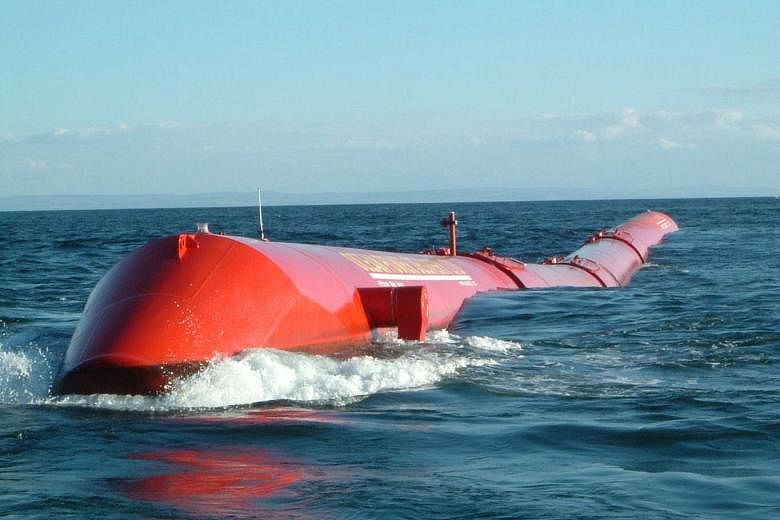HONG KONG • China is planning to build electricity-generating wave farms near remote islands in the South China Sea to power its radar network, a move expected to strengthen the country's foothold in the disputed waters, the South China Morning Post (SCMP) reported yesterday, citing researchers involved in the project.
The floating power stations, each about the size of a soccer field, will transform the constant movement of the sea water into electricity, the researchers from Guangzhou Institute of Energy Conversion, part of the Chinese Academy of Sciences, told the Hong Kong newspaper.
China's building of civilian and military facilities in the South China Sea has put a strain on the country's power supply chain in recent years as it strives to power the larger-than-ever radar network.
"Military radars are power-hungry beasts that must be fed all the time," an anonymous researcher was quoted by SCMP as saying.
When operating at full power to detect a distant object, an early warning system may require thousands of kilowatts of energy, tantamount to the total demand of 1,000 average households in the US, according to the newspaper.
"Sending fossil fuels to remote islands is costly and time-consuming. The shipping can also be affected easily by bad weather or unfriendly neighbours," the researcher added.
The floating generators, however, can stay in operation on windless days and even in the face of a super typhoon, according to researchers.
In the event of a typhoon, they would automatically partially submerge, leaving only a small area on the surface to avoid damage caused by strong winds.
Two years ago, a smaller 10kw prototype in the South China Sea survived Typhoon Haiyan that claimed more than 6,000 lives in the Philippines. The machine continued to generate power even after most of it was submerged, SCMP said.
Another advantage is that, unlike solar power panels or wind turbines that tap on conventional renewable energy, these units do not take up any land area, which small islets in the South China Sea do not provide, the researchers said.
SCMP said the latest model being tested is among the largest power- generating machines of their kind in the world, capable of churning out in excess of 200 kilowatts.
Similar power buoys deployed in the United States and Australia have shown peak power output of around 150kw, SCMP reported.
A full-scale unit of the Chinese model, which resembles half a submarine and costs nearly 20 million yuan (S$4.4 million), was deployed for a test run in waters off the Wanshan archipelago near the city of Zhuhai in Guangdong province early last month.
Professor Li Ming, a radar expert from Xidian University, told SCMP that using sea waves to provide power is a logical solution, but he doubted whether a wave farm would suffice. "A warning radar consumes far more than 200kw of power," he pointed out.

